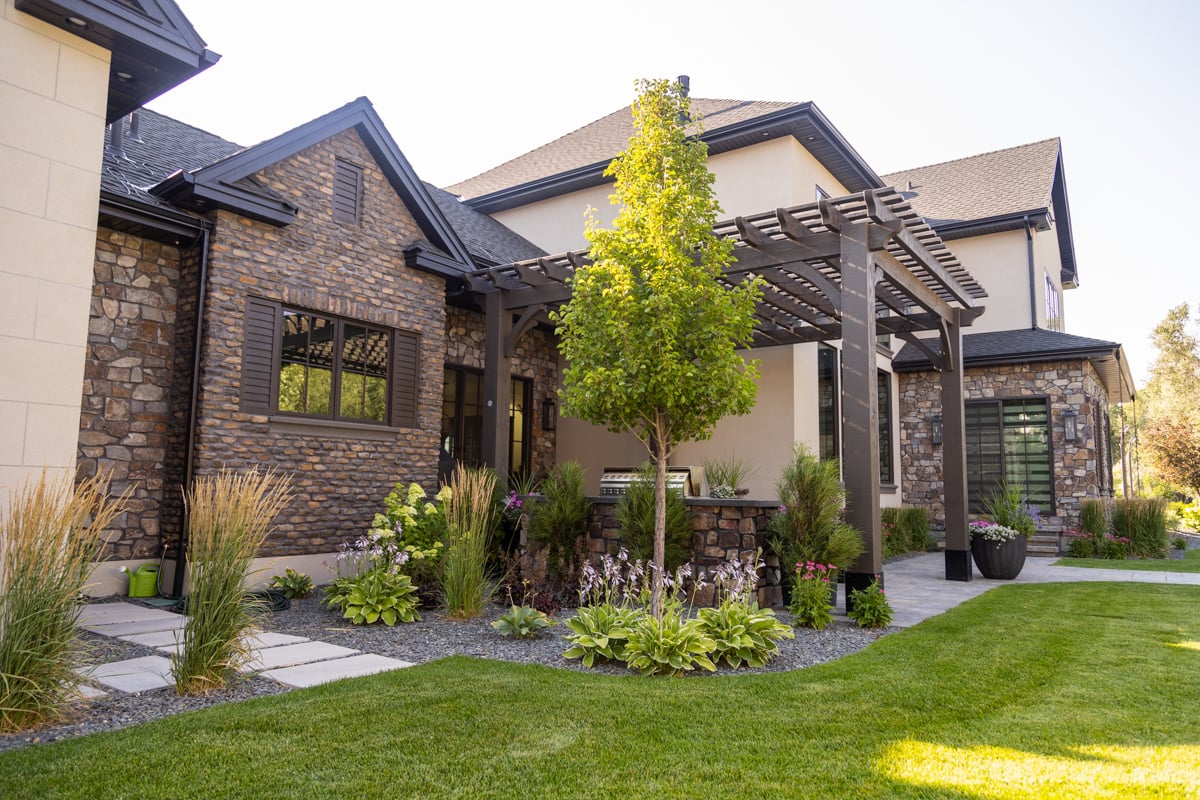
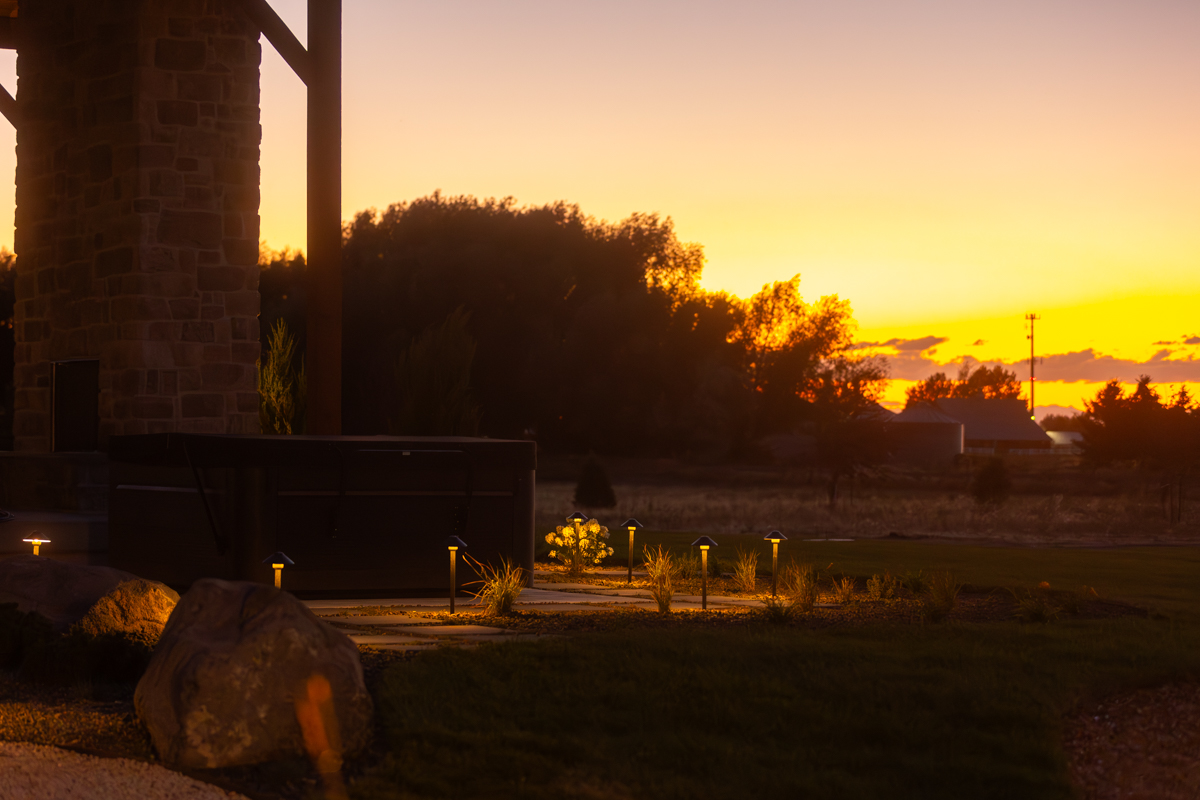
Your Guide to Landscape Lighting Design
An Introduction to Professional Landscape Lighting for Idaho Falls Homeowners
You never know just how powerful and important light is — until it goes away. Even the most familiar setting becomes foreign when plunged unexpectedly into darkness.
As a child, your fear of creatures that went bump in the night went away with the simple click of a night light’s switch.
Now, as an adult, what’s your first instinct when you lose power during a thunderstorm? You grab a flashlight. Even a thin beam of light brings comfort to an otherwise scary situation, bathing the whole room in a wash of soothing illumination. Light offers a sense of safety and knowledge to any space it occupies.
- What Are The Benefits of Landscape Lighting?
- What to Consider Before You Install Landscape Lighting
- Working With Your Landscape Lighting Designer
- Hire a Landscape Lighting Designer in Idaho Falls
But it’s more than that: Light, when added with an eye to design, also offers an extra aesthetic touch to its surroundings. It highlights what’s beautiful and casts a shadow on the unseemly.
And your landscape is likely no different. There are plenty of reasons to add landscape lighting to your outdoor spaces, and to do so with aesthetics in mind. Here are just a few.
What Are The Benefits of Landscape Lighting?
Safety and Security
Many homeowners decide to install landscape lighting purely for their peace of mind. And security lighting doesn’t necessarily have to mean huge flood lights triggered by sensitive motion sensors.
Landscape lighting is one of the simplest ways to secure your property and loved ones — with fewer dark corners and untouched areas in your landscape, there are fewer places for trouble and mischief to lurk. Outdoor lighting also keeps you safe from slips, trips, and falls while navigating your outdoor living areas by night.
Installed correctly, even the most aesthetically pleasing landscape lighting automatically provides safety and security by its presence alone.
Highlighting Architectural Elements
The exterior of your home and the other architectural elements of your outdoor living areas are just equally important to your landscape design and the lighting you select to illuminate it!
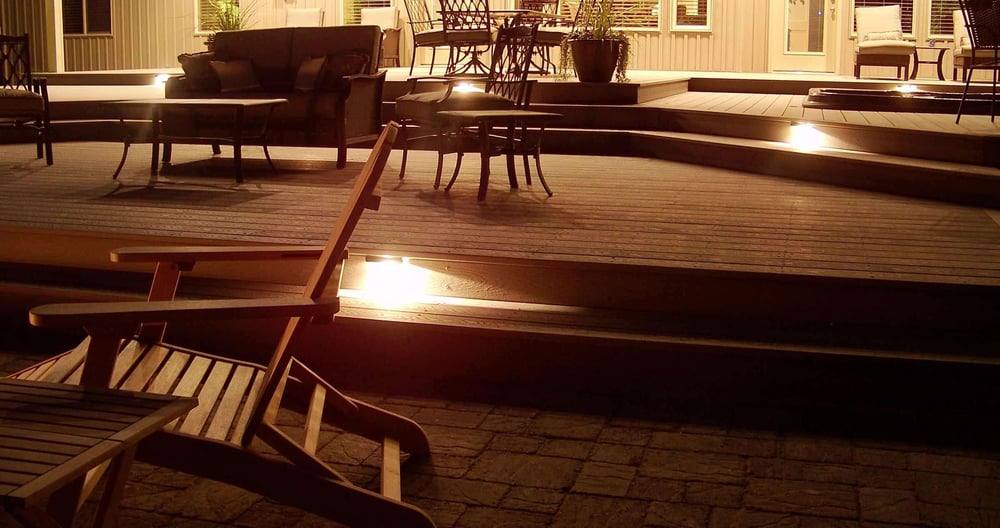
Whether you’ve built your landscape around the design of your home or designed the two in stark contrast to each other, you may want to consider highlighting the architectural elements of your home with landscape lighting. Retaining walls, stairs and other architectural landscape elements may be another area to consider adding landscape lighting.
Illuminating Special Features and Focal Points
Adding Aesthetic Touches
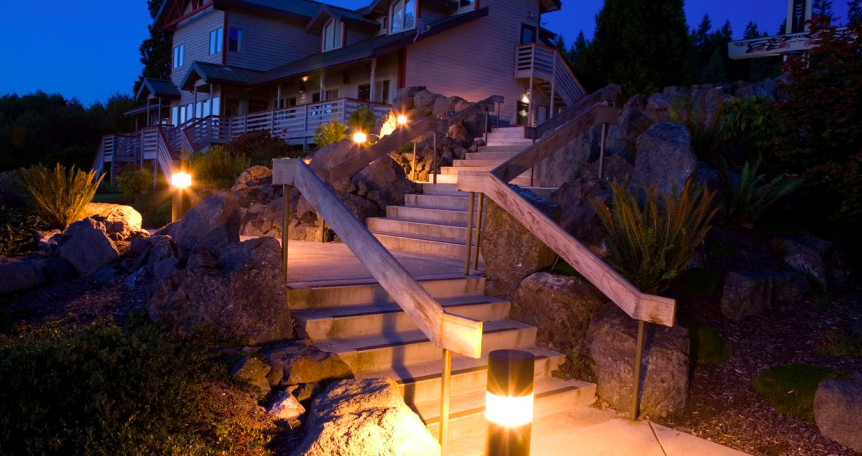
Choose The Perfect Lighting Fixture For Your Design Style
As with all your other landscape elements, your outdoor lighting should reflect your personal design style. Whether you opt for fixtures that match the basic style of your home and other landscape elements or decide to make a bold statement with outdoor lighting fixtures that really stand out from the rest of your landscape, there’s a wide variety of fixtures out there to help you achieve that look.
If there’s a particular style you want — from traditional to transitional, modern to Mission — there’s a good chance your landscape lighting professional knows just the right fixture to suit.
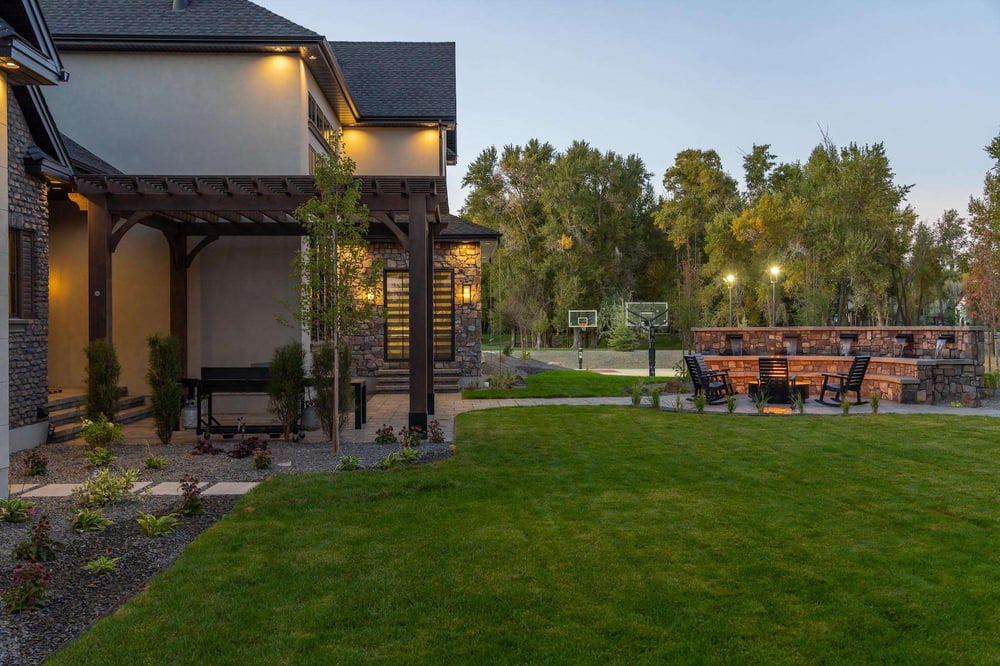
Find The Right Landscape Lighting Fixture Material
Once you’ve settled on a fixture style, it’s time to think about what material you’ll select for your outdoor lighting fixtures. Your landscape budget is a big consideration where fixtures are concerned — the material they’re constructed of can make a huge difference in price.
But lifetime durability is another factor: Landscape lighting goes through a lot during its life! Constant exposure to the elements — including rain and irrigation water, as well as animal urine — means it’s important to select a fixture material that can handle everything it endures in its service environment.
Aluminum
Aluminum is very affordable but typically of the lowest quality. It’s also not as durable as other materials: Over time, it will oxidize, and the paint will fade.
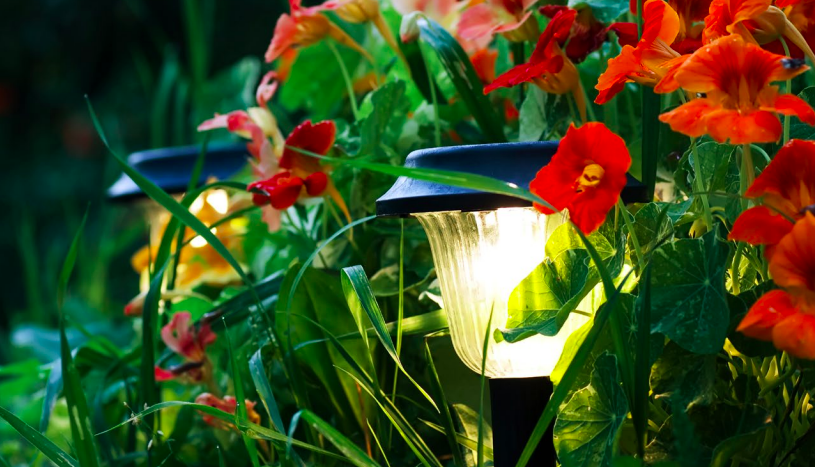
Aluminum doesn’t hold up well around salt and will corrode over time, so it’s not recommended for coastal applications. Powder coating will extend the life of an aluminum fixture, as the paint will seal the aluminum — but they’re highly affected by the sun’s UV rays. In just a few years after installation, you can expect to see these fixtures begin to discolor, or depending on their quality, even chip and peel.
Brass
Made from a mixture of copper and zinc, brass is a hard metal that holds up well in all environments. Brass landscape lighting fixtures are more expensive than other metal fixtures, but they’ll last for many years and often come with extended warranties.
Brass will develop a patina over time when exposed to the elements, but it will not corrode and is a great option for outdoor and landscape lighting, especially in coastal environments.
Copper
Copper is another great quality option for outdoor lighting. Copper is not quite as solid as brass, so some manufacturers will make brass fixtures and coat them with copper so you have the best of both worlds: the longevity of brass and the beauty of copper.
Copper will also develop a patina over time, darkening when exposed to the elements.
Composite
High-quality composites can offer better structural strength than the lighting sets sold in hardware and big-box stores. Composite materials are resistant to corrosion and can be much more affordable than comparable solid-metal fixtures.
Your Landscape Lighting Budget
Go into your first meeting with your designer with a good idea of your budget, and be frank about your priorities: Where are you willing to splurge? Where might you be willing to cut back?
Make a list of the elements that you absolutely must incorporate into your landscape lighting design and those you simply want to have.
Your Outdoor Lighting Needs
To establish your needs, case your property by night. Take note of the areas in your landscape that represent a safety or security risk in the dark.
Is there a dark recess of your landscape where a thief or other intruder might be able to hide out? Maybe the pool deck or a walkway between two areas of your outdoor living area could use some special lighting after an embarrassing recent incident.
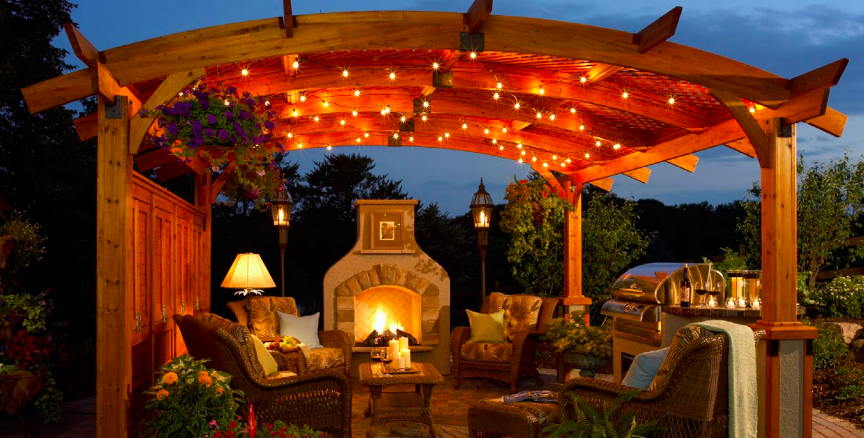
Your Landscape Lighting Wants
Your “wants” column is more about the fun aspects of your landscape lighting design. This is your opportunity to tell your landscape lighting designer all about the truly special areas of your landscape that you want to be illuminated by night — features someone might not take note of unless they visited often or truly knew you.
This is your opportunity to tell your landscape designer about the heirloom rose plant that’s been passed through your family for generations — or the swimming pool you spent your family’s life savings on last summer (you should be able to swim in that pool 24 hours a day for what it cost!).
These wants are an investment, for sure, but they’re worth making if you’ve got the budget for them.
Landscape lighting professionals have dealt with homeowners with all manner of budget concerns — so you’re almost guaranteed they’ve heard yours before, too, and will have a way to address it.
It’s the moment you’ve been waiting for... a meeting with your landscape lighting designer to determine the look and feel of your landscape lighting. Now is the time to sort through all that inspiration you had, all the lists you made (both in your head and on paper), and share them with your designer.

The meeting will start with a walkthrough of your property. This is a perfect opportunity for you to go over the list of features you’ve labeled “needs” and “wants.” In addition to perusing that list together, you should have a conversation about focal points within your landscape. What areas are you hoping to highlight with your landscape lighting?
Being intimately familiar with your property and landscape is a good thing here, but that familiarity may also create “blinders” to other beautiful areas of your landscape. Your landscape lighting designer may have some other ideas as to where the landscape lighting system can highlight or otherwise add illumination.
Either way, come to an agreement on those focal points before you go any further with your landscape lighting designer.
Ironing Out The Logistics
A walkthrough is helpful, but to keep the image of your property fresh in your landscape lighting designer’s mind, send them back to the studio with a copy of your landscape design drawings or plans. This schematic will ensure you’re working from the same page — literally
The designer should also take some photos of your property as a way to jog their memory when placing fixtures on their design.
After they’ve had some time to ruminate on your needs and wants, your landscape designer will put together a formal design document — a lot like your landscape design plans — that will give you an idea of where your landscape lighting fixtures will be placed, and how they’ll all work together.
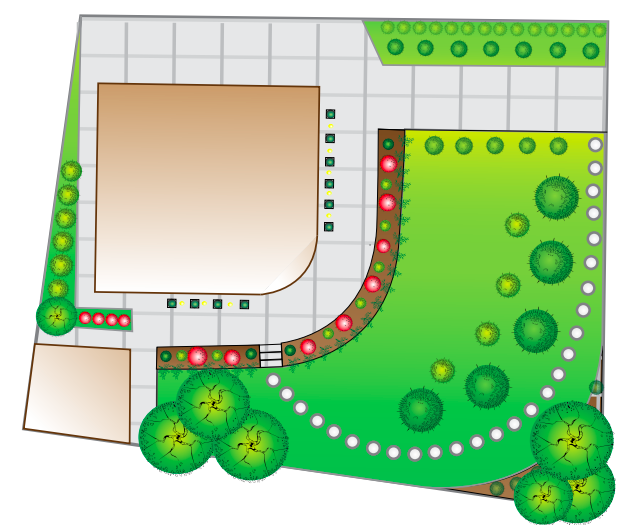
Some landscape lighting contractors even use interactive software that, in addition to showing where the lights will be placed on a static drawing, can actually give you an idea of how your landscape will look by night once the lighting has been installed.
The more detail you can get from your landscape lighting designer, the better. Interactive design drawings, video “tours” and the like will help you visualize exactly what the contractor is going for in your design — and help prevent miscommunications farther along in the installation process, when it’s already too late to fix them.
Landscape Lighting Installation
If you’d like to adjust the design your landscape lighting contractor has submitted to you, they should be 100 percent willing to make those changes. The process should move forward only after you’ve signed off completely on the design, budget, and even the proposed timeline.
Once you’ve agreed on the design of your landscape lighting, it’s time to get started on installation!
You and your designer will agree on a start time, then they’ll give you an idea of how long the installation will take. It could be a couple of days to a few weeks, depending on the complexity of your landscape lighting design as well as factors like the weather.
Final Walkthrough
You’re almost done!
Once the installation of your landscape lighting is complete, you’ll meet with your landscape lighting designer once more to do a final walkthrough.
This will be done after the sun goes down since one of the key components of your walkthrough will be looking at each fixture’s direction and spread together — and making any necessary adjustments to your installation to ensure the perfect safety, security, and, of course, ambiance in your outdoor living space.
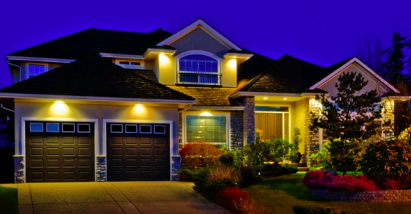
During this final walkthrough, your landscape lighting designer will also show you how to operate the system. (Even if your landscape lighting is set on a system of timers and sensors, you’ll still want to understand its inner workings in case you need to tweak those settings, including adjusting the timer — or manually operating it at any point.)
Landscape Lighting Maintenance
Like any element of your property, landscape lighting does need maintenance over time, no matter how meticulous and professional the installation is. Without regular maintenance, the effectiveness of your lighting may falter as failed lamps go unnoticed, or dirty fixtures and old bulbs dim the fixtures that were once bright and beautiful.
The cost of regular maintenance will really depend on the materials you choose and how often your landscape lighting is actually in use.
Your outdoor lighting fixtures’ light bulbs usually last about a year — and just like the bulbs for your indoor fixtures, you’ll need to take special care to replace them with the correct bulb to prevent blown fuses and electrical problems. Many landscape lighting design and installation companies also offer comprehensive service and maintenance programs.
If you’re interested in long-term maintenance for your outdoor lighting system, ask your landscape lighting professional about their service plans. These plans could include services like:
- Bulb replacement
- Lens cleaning
- Regreasing fixtures
- Reburying exposed wires
- Adjusting timers and controls
- Trimming unkempt surrounding plant life
The price of this service will vary from provider to provider, of course, with some even offering discounts for regular service calls.
Hire a Landscape Lighting Designer in Idaho Falls
If you’re ready to start the landscape lighting design process in Idaho Falls, we’re ready for your call!
Preparing for and executing your landscape’s lighting design, installation, and maintenance are huge undertakings, but you’ll come away with a landscape you can enjoy for years to come — and an addition to your home that could offer a considerable boost to your property value, too.
We’ll work with your tastes — and within your budget — to create and care for the landscape lighting plan that’s 100 percent tailored to you and your family’s needs.
Call us at 208-656-3220. Or fill out the contact form to schedule a no-obligation meeting with one of our team members.
We can’t wait to hear from you.
If You're Looking For a Sign, This is It.
Seriously, that lawn isn't getting any better on it's own. Mrs. Jones just called the HOA on you
Outback Landscape

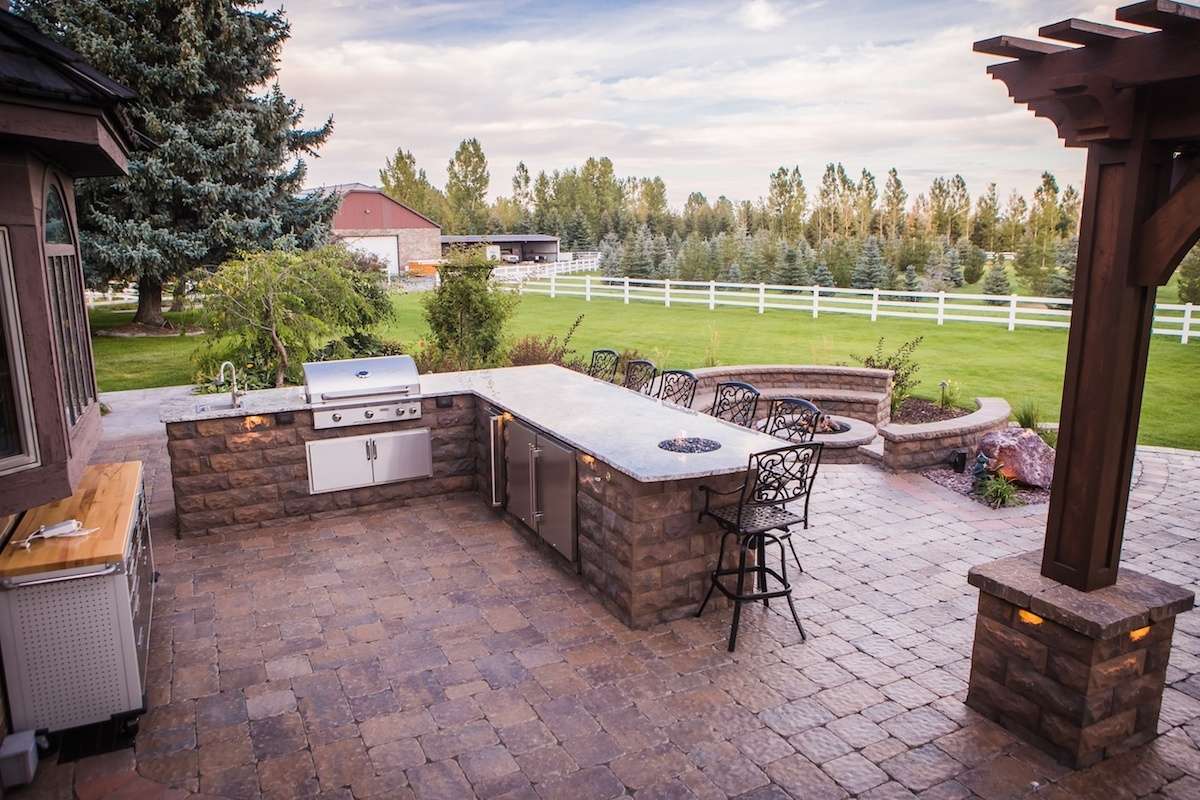
Brick Pavers vs Stamped Concrete: Pros, Cons, and Costs
.jpg)
